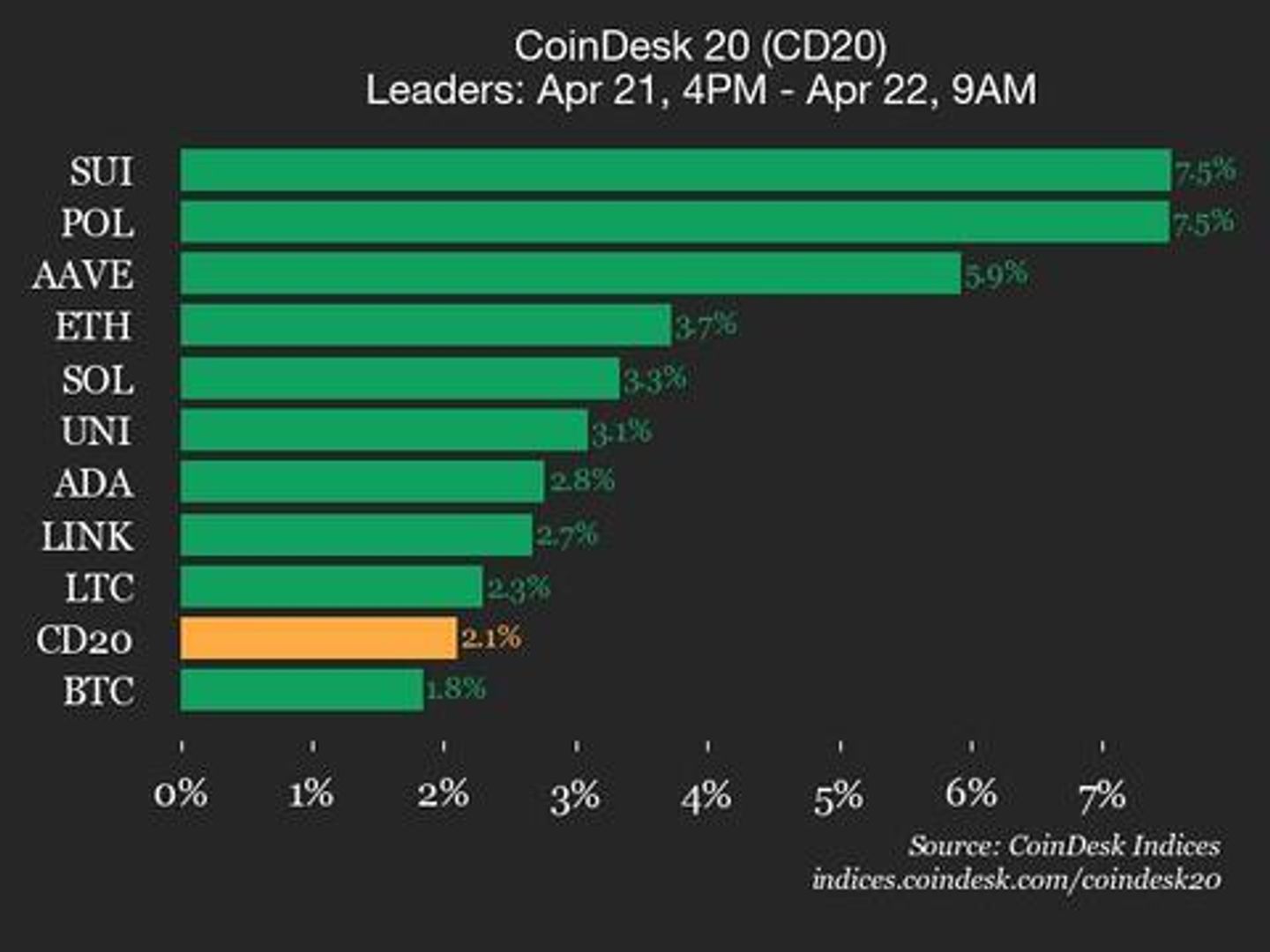Uncategorized
Why 2025 Will See the Comeback of the ICO

Regulatory overhaul in America and a thawing of crypto antagonism globally in 2025 will usher in a new generation of decentralized capital formation, which was first popularized in 2017 as “ICOs” (initial coin offerings).
During the 2010s, crypto hadn’t settled on a productive use case for Bitcoin and altcoins until Ethereum smart contracts enabled early-stage teams to raise capital from supporters dispersed around the world. We saw Ethereum bootstrap a global decentralized computer which spawned DeFi, NFTs and various crypto primitives funded by less than $20 million raised from a global community.
Many other projects soon followed suit and we observed a new dynamic in which raising early-stage capital from a decentralized community almost always resulted in more value-add for the project and entrepreneurs than even the best, most well-intentioned venture capitalists could offer. With a decentralized investor group, entrepreneurs get free evangelists, beta testers and code contributors — i.e. free work that contributed to the project at hand. Also, the shorter liquidity time frame allowed for better risk-return profiles for early-stage investors.
Unfortunately, ICOs were slowly choked off and signalled as “not in compliance” with regulations that were never exactly spelled out. By 2020, they had slowed to a trickle and 88% of ICO tokens were trading at below issuance price.
Fast forward to 2025 and we can see the convergence of some important inputs that allow for the re-emergence of compelling investment opportunities, but with very different characteristics from ICO 1.0.
The ingredients of ICO 2.0
1. Updated regulatory stance
I predict that value accrual will be a fundamental part of the “why” of investing in tokens this time around. Entrepreneurs and investors in the space have matured and are ready to collectively admit that there is an expectation of profit with most tokens. In fact, one could argue that the obfuscation of how token holders would be compensated as a hand-wavey attempt to sidestep the Howey test was the primary problem the first time around.
KYC/AML will be focused on on-ramps and off-ramps such as exchanges and L2 bridges, and reasonably concentrate at the point of realization of gains back into fiat, which is the appropriate light touch that should satisfy reasonable regulators.
2. Market turnover
We are seeing the rapid decline of certain mid-market companies that could remake their business models by becoming community-led and decentralized. For example, mid-size media companies including newspapers and magazines are an obvious business model that could be greatly improved by the use of a token economy to drive citizen journalists towards greater professionalism.
3. Crypto’s progression
In 2017 we had ICO-click-races on very rough UI/UX interfaces, pre-launch SAFT (Simple Agreement for Future Tokens) rounds going to a handful of VCs and years of waiting until a live network launch. No one should be surprised then that the majority of ICO projects died. The Darwinian nature of any emerging technology is such that most will perish but the few that survive go on to create great value (spoiler alert: >90% of AI projects are going away as well).
Crypto now has decent on-boarding and good user-facing apps, and most importantly, the community has shown an uncanny ability to publicly call out nonsense and root out bad actors far better than government oversight ever has. The light of open decentralized ledgers is a particularly strong disinfectant.
Implications and predictions
So what does all this mean for the crypto community?
This new wave of decentralized capital formation will dwarf the approximately $20 billion of capital allocated in ICO 1.0 in 2017 and 2018. Over the coming years, we will see hundreds of billions in total capital formation across DeFi, NFTs, RWAs and a plethora of other crypto primitives.
M&A activity will represent a significant component of on-chain capital formation activity. Whether it is traditional businesses getting serious about crypto and buying up lost ground, like the Stripe-Bridge deal or EVM L2s joining forces as they recognize that only a handful will survive to be significant, we will see billions of dollars worth of M&A activity in the coming year.
In addition, mid-market Web2 and legacy companies will seek to reinvent their business model now that they can use token-incentivization under less hostile circumstances. We are seeing companies in energy, media, art and cellular communications get serious about token-incentivization to turn their value chain into an open marketplace, as well as rapidly acquire customers and use cheap(er) labour.
I am also optimistic that regenerative financing, blending a capitalistic mandate and philanthropic mandate, will find its place. And I am very excited about how crypto can change paradigms in bridging reasonable returns on capital with social goals in more compelling ways than we’ve seen to date.
I predict that we will see a range of novel ways to choose ICO participants, whether as a reward to LPs, relying on reputation based on on-chain activity or via the usage of certain proofs. The byproduct of this is that we will see better balance between retail and institutional/VC investors.
Finally, as always with crypto, we will continue to see relentless innovation and new ideas that give rise to more early stage funding opportunities. Many exciting new teams clearly see that AI’s natural transaction medium will be via crypto and are preparing accordingly. AI agents will bootstrap themselves with token-backed fundraising mechanisms that blend debt and equity principles.
Overall, I am optimistic that the crypto community has internalized the lessons learned along the stoic path of evolution to this point. As a litany of opportunities for capital allocation emerge next year, I encourage everyone in crypto to be vocal and open in highlighting due diligence red flags and bend the arc of this industry towards open access, fair launches and projects that are forthright in accruing value to token holders.
Fair launches are a superior path forward and we should all work towards more equitable and transparent fundraising practices. There are still many issues to resolve and there will be some spectacular failures as we move forward, but decentralized capital formation is crypto’s original killer app, and it deserves to continue to evolve.
Uncategorized
CoinDesk 20 Performance Update: SUI and POL Rise 7.5%, Leading Index Higher

CoinDesk Indices presents its daily market update, highlighting the performance of leaders and laggards in the CoinDesk 20 Index.
The CoinDesk 20 is currently trading at 2556.62, up 2.1% (+52.39) since 4 p.m. ET on Monday.
Fifteen of 20 assets are trading higher.

Leaders: SUI (+7.5%) and POL (+7.5%).
Laggards: FIL (-4.5%) and XLM (-1.6%).
The CoinDesk 20 is a broad-based index traded on multiple platforms in several regions globally.
Uncategorized
DAO Infrastructure Provider Tally Raises $8M to Scale On-Chain Governance

Tally, a leader in on-chain governance tooling, has secured $8 million in Series A funding aimed at scaling its governance technology to more crypto-native decentralized autonomous organizations (DAOs).
Tally is best known for the Tally Protocol, which powers infrastructure to help leading protocols conduct effective on-chain governance of their DAOs, including Arbitrum, Uniswap DAO, ZKsync, Wormhole, Eigenlayer, Obol and Hyperlane.
«We’ve built this complete stack of software for operating these on-chain organizations,» Dennison Bertram, CEO and co-founder of Tally Protocol, said in an interview with CoinDesk. «We can take you from your idea to launching your token, to distributing your membership or ownership, all the way to the value accrual for your protocol.»
The platform began as a DAO governance tool and has evolved into the most widely adopted software stack for on-chain organizations across the Ethereum and Solana blockchains, it said in a release.
«On-chain governance and capital formation could, in theory, dramatically reduce the complexity and cost of forming and operating organizations by moving these processes entirely into software rather than traditional jurisdictions guided by platforms like Tally,» Bertram said.
One day, on-chain organizations might be seen as a way to compete with nation states, he argued, referencing the costly and lawyer-intensive process of registering foundations and other legal entities typically used for crypto.
«Whoever embraces crypto really fully might actually be embracing fully the future,» he said.
Fixing vote turnout for better governance
One issue that Tally aims to tackle with funding from the Series A is low voter participation and apathy in DAO governance, which has led to sometimes controversial outcomes.
Last year, for example, a group of CompoundDAO token holders, called Golden Boys, successfully passed a controversial proposal to create a yield-bearing product called goldCOMP.
Despite initially gaining traction, the proposal faced significant controversy due to perceived irregularities, low voter turnout and a lack of widespread community engagement.
Ultimately, the Golden Boys agreed to cancel goldCOMP, which highlighted the broader issue of governance apathy within DAOs rather than any technical exploit or malicious intent.
«Many of the people that you should expect to vote ‘no’ on something like this didn’t show up,» Bertram said in an earlier interview. «What it shows is that the democratic process of governing a DAO is imperfect and needs improvement.»
To address this, Tally has developed staking mechanisms designed to reward active governance participants economically. Users can stake their governance tokens to receive Tally Liquid Staked Tokens (tLSTs), earning passive, auto-compounding yields while retaining voting rights within DAOs.
“This fundraise is really about leaning into the original vision,” Bertram said. “Now that we’ve proven that this works, that you can have these large organizations, it’s time to really scale it up.”
Institutions are getting involved in DAOs
Bertram also emphasized that recent regulatory clarity and shifts in attitude toward crypto governance in the U.S. have opened the door for increased institutional participation in DAOs.
“With this clarity, we’re going to get a lot more participation, not necessarily from average Joe token holders, but actually from large organizations that depend on the infrastructure they’re building on,” he said. “These organizations are going to need and want the ability to actually govern the infrastructure that they operate on.”
Ultimately, Bertram sees Tally’s role as pivotal in advancing decentralized governance and unlocking greater economic value for token holders by directly rewarding active, informed participants.
«Given the new acceptance of crypto as a key driver of future value in America, it’s time to scale it beyond crypto and make it a core primitive for creating new organizations,” he said.
The round was led by Appworks and Blockchain Capital with participation from BitGo amongst others.
Tally previously raised $7.5 million in 2021 across two funding rounds.
Uncategorized
Dutch Bank ING Said to Be Working on a New Stablecoin With Other TradFi and Crypto Firms

Dutch bank ING is working on a stablecoin, looking to take advantage of Europe’s new cryptocurrency regulations that came into force last year, according to two people with knowledge of the plans.
ING’s stablecoin project could take the form of a consortium effort involving other banks and crypto service providers, both people said.
“ING is working on a stablecoin project with a few other banks. It’s moving slow as multiple banks need board approval to set up a joint entity,” one of the sources said.
ING declined to comment.
Europe’s Markets in Crypto Assets regime [MiCA] requires stablecoin issuers across EU member countries to hold an authorization license, while promoting the potential of euro-denominated stablecoins (the vast majority of the stablecoins in circulation are pegged to the U.S. dollar).
MiCA’s stablecoin rules, which also require issuers to maintain significant reserves in banks based in Europe, have strengthened compliant offerings like Circle’s euro stablecoin EURC over its main rival Tether, according to a note early this year from JPMorgan.
Banks like ING entering the European stablecoin space means French lender Société Générale, the first big bank to offer a stablecoin through its SG Forge innovation division, will soon have some competition.
Read more: Stablecoin Market Could Grow to $2T by End-2028: Standard Chartered
-

 Fashion6 месяцев ago
Fashion6 месяцев agoThese \’90s fashion trends are making a comeback in 2017
-

 Entertainment6 месяцев ago
Entertainment6 месяцев agoThe final 6 \’Game of Thrones\’ episodes might feel like a full season
-

 Fashion6 месяцев ago
Fashion6 месяцев agoAccording to Dior Couture, this taboo fashion accessory is back
-

 Entertainment6 месяцев ago
Entertainment6 месяцев agoThe old and New Edition cast comes together to perform
-

 Sports6 месяцев ago
Sports6 месяцев agoPhillies\’ Aaron Altherr makes mind-boggling barehanded play
-

 Business6 месяцев ago
Business6 месяцев agoUber and Lyft are finally available in all of New York State
-

 Entertainment6 месяцев ago
Entertainment6 месяцев agoDisney\’s live-action Aladdin finally finds its stars
-

 Sports6 месяцев ago
Sports6 месяцев agoSteph Curry finally got the contract he deserves from the Warriors





